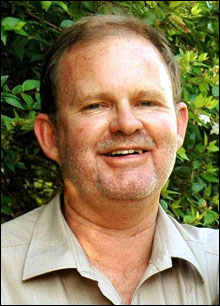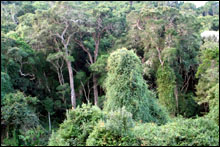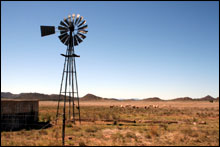Of SAEON stakeholders and summits
|
- By Johan Pauw, Head of SAEON
Stakeholder relations
SAEON’s unique character as an institutionalised network is often not well understood. The average scientist thinks about science management in hierarchical terms - universities, institutes, centres, science councils, departments, programmes, etc. When the term “network” is used, it mostly refers to people networks promoting scientific discourse and information exchange.
In SAEON, “network” is taken beyond its popular meaning. SAEON, first and foremost is a catalytic institution with permeable and diffuse boundaries so that people, organisations and resources may be coordinated and supported to deliver in excess of the sum of the total individual effort.
True to its mandate, SAEON’s growing list of partners includes the node hosts (South African National Parks, South African Institute for Aquatic Biodiversity, Marine and Coastal Management, South African National Biodiversity Institute, Ezemvelo KZN Wildlife), SAEON participants (universities, science councils, government departments, private companies, non-governmental organisations, schools), international organisations (International Long Term Ecological Research Network, Environmental Long-Term Observatories of Southern Africa, Group on Earth Observation, DIVERSITAS, FP7 of the European Commission, Joint Research Centre, Southern African Data Centre for Oceanography, CODATA Working Group on Archiving Scientific Data, African Coelacanth Ecosystem Programme, etc) and a variety of sponsors (Department of Science and Technology, National Research Foundation, National Skills Fund, University of Hamburg, Murray & Roberts, National Ports Authority, etc).
We therefore experience an increasing need to liaise with our stakeholders at corporate level, not only to be responsive but also to pro-actively influence alignment within the SAEON context. The SAEON Advisory Board has recognised that a grand effort will be required and that it requires the full-time services of a Coordinator: Partner & User Relations. We therefore hope to advertise a new position in the National Office to this effect in the immediate future.
After thorough consultations of the immediate research communities and the bidding host organisations, SAEON has now reached the final stages of the implementation of its six nodes. The last two nodes have been endorsed by both the SAEON Technical Steering Committee and the SAEON Advisory Board. These are a node for Grasslands-Forests-Wetlands, to be hosted by Ezemvelo KZN Wildlife in Pietermaritzburg, and a node for Arid Lands, to be hosted by SANParks in Kimberley.
In addition, the manager’s position for the node for marine-offshore systems has been filled, whereas interviews are being planned for the manager’s position for the SAEON Fynbos Node. Dr Juliet Hermes, the new manager of the SAEON node for marine-offshore systems is an excellent role-model for aspirant women scientists. SAEON is hopeful that the mission to establish its nodes would be completed by the first half of next year and that this will lead into the next phase of exponential growth in productivity and value.
This next phase will be heavily influenced by developing forces in SAEON’s playing field, namely that of the South African Earth Observation Strategy (SAEOS; http://www.space.gov.za/space2006/SAEOS_STRATEGY.DOC) as driven by the South African Space Agency (SASA), and by emerging national research thrusts on Global Change and Earth Observation.
SAEON Summit frequency
The original plan was to have a SAEON Summit every second year. For good reason, the SAEON Technical Steering Committee and the SAEON Advisory Board advised that the SAEON SUMMIT should only be held once in four years in view of the following:
- A national meeting on long-term large-scale Earth observations inherently requires longer intervals due to the nature of the research which should presented. Papers of substance will not be produced in short periods.
- A number of annual meetings are organised by various relevant societies. Smaller ad hoc SAEON-supported workshops and meetings should rather be organised, some as dedicated sessions within disciplinary conferences, which would provide for continuity in the flow of scientific thinking in between SAEON Summits.
- The small SAEON National Office simply cannot sustain the workload associated with a biennial SAEON Summit.
SAEON’s Standing Rules will be changed accordingly and the next SAEON Summit will therefore be organised in 2010.













